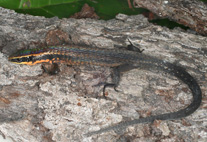Abstract
The morphology and infraciliature of the four hypotrichous ciliates; Rigidohymena inquieta (Stokes, 1887) Berger, 2011, Pattersoniella vitiphila Foissner, 1987, Notohymena australis Foissner & O’ Donoghue, 1990, and Cyrtohymena (Cyrtohymenides) australis (Foissner, 1995) Foissner, 2004, collected from east China, were investigated by using live observation and protargol impregnation method. An improved diagnosis for R. inquieta was supplied based on descriptions of present and previous populations. New morphology and morphogenesis information based on Chinese populations of another three hypotrichids were also supplemented. The Small-subunit rRNA (SSU rRNA) gene sequences of the four species were characterized and their phylogenetic positions were revealed by means of Bayesian inference and Maximum-likelihood analysis. The analyses shows that R. inquieta clusters with other members of the subfamily Stylonychinae, which confirms the monophyly of the subfamily and verified R. inquieta as a separated species from R. candens though it differs from others mainly by body size. C. (C.) australis occupying the basal position of the clade which contains cyrtohymenids and some other groups, declines the idea of separating Cyrtohymena into two subgenus. Notohymena australis and China population of Pattersoniella vitiphila respectively clustering with their congeners correspond well with the systematics revealed by morphological similarities.

